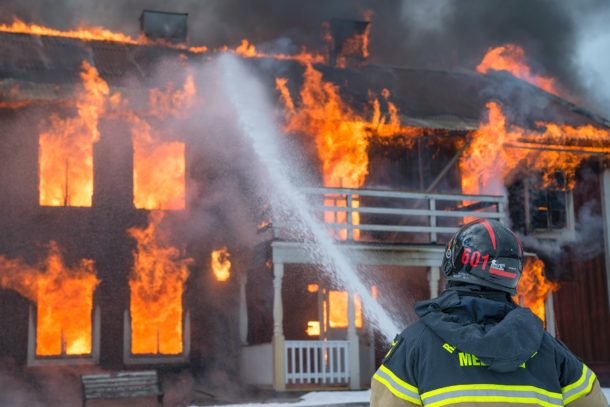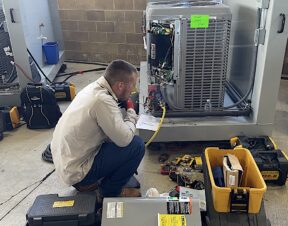Every contractor has a variety of risks at any given moment. Sometimes those risks are heightened depending on the location of the work, and the project taking place.
Even experienced contractors need to be aware of the possibilities.
Most venues like hotels, restaurants, and hospital buildings will have a range of fire risk prevention, fire doors, large atrium smoke curtains, as well as regular inspections.
The typical building site will also run a number of checks, but the risks are still there on both counts.
Here are some of the most common fire risks during construction:
Temp lighting and electrics
All temporary lighting and electrical outputs should be installed to meet the requirements of any electric code standards. However, sometimes these things are installed quickly and remain unchecked. Ensure that all temporary installments meet the required guidelines.
This also includes temporary heaters. While they should all be listed and tested before they are used, old heaters are in circulation. Ensuring there is enough space around the heater so that nothing is at risk of catching fire.
Fire protection
Having the location prepared with fire extinguishers and sandpipes is essential until the smoke alarms and sprinklers have power. These items should be easy to access and can help in the case of a fire breakout.

Photo by Daniel Tausis on Unsplash
Arson
Building sites that are unsecured are at risk of theft, arson, vandalism, and other illegal activities.
To reduce the risk of unwanted entry consider a nightguard, motion sensor floodlighting, alarms, and other perimeter controls.
The accidental fire caused by cigarette smoking can be prevented by having a no-smoking policy on-site, or provide a temporary smoking shelter at the very edges of the site.
Hot Work
All of the hot work that you do could cause a fire at any point. After doing work like soldering, grinding, and working with other combustibles should be watched for at least 30 minutes after usage so that they are not a fire risk.
The cool-down period is one of the most important parts of avoiding fires when it comes to hot work.
Tools
If your tools are older, or they run on batteries then there is a higher chance that they will overheat or malfunction. For all tools that need to be charged, the charging ports should be outside of areas that have a lot of rubble or debris.
This also includes keeping skips at least 10m from the building area where possible.
Building sites, home repairs, and maintenance work always come with some risks. Fire risks are something that can be prevented and reduced when there is the appropriate step taken.
Regular inspections of the work area, and ensuring that you personally as a contractor ensure your personal work area and your tools are the best possible standard.
At the end of each workday during the cool-down period is the ideal time to make sure that you have turned off all of the machinery and everything has been unplugged from the mains.




Join the conversation: